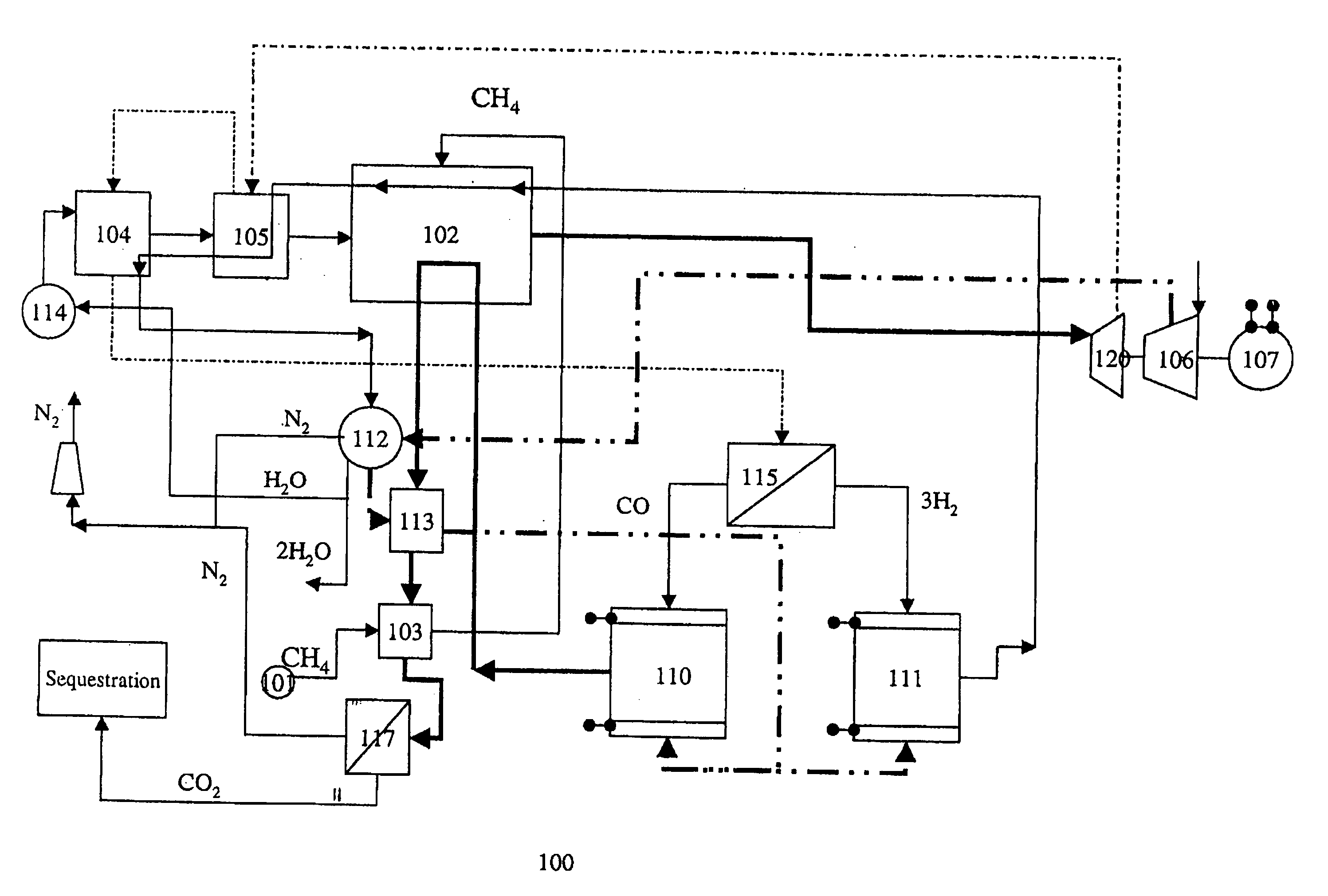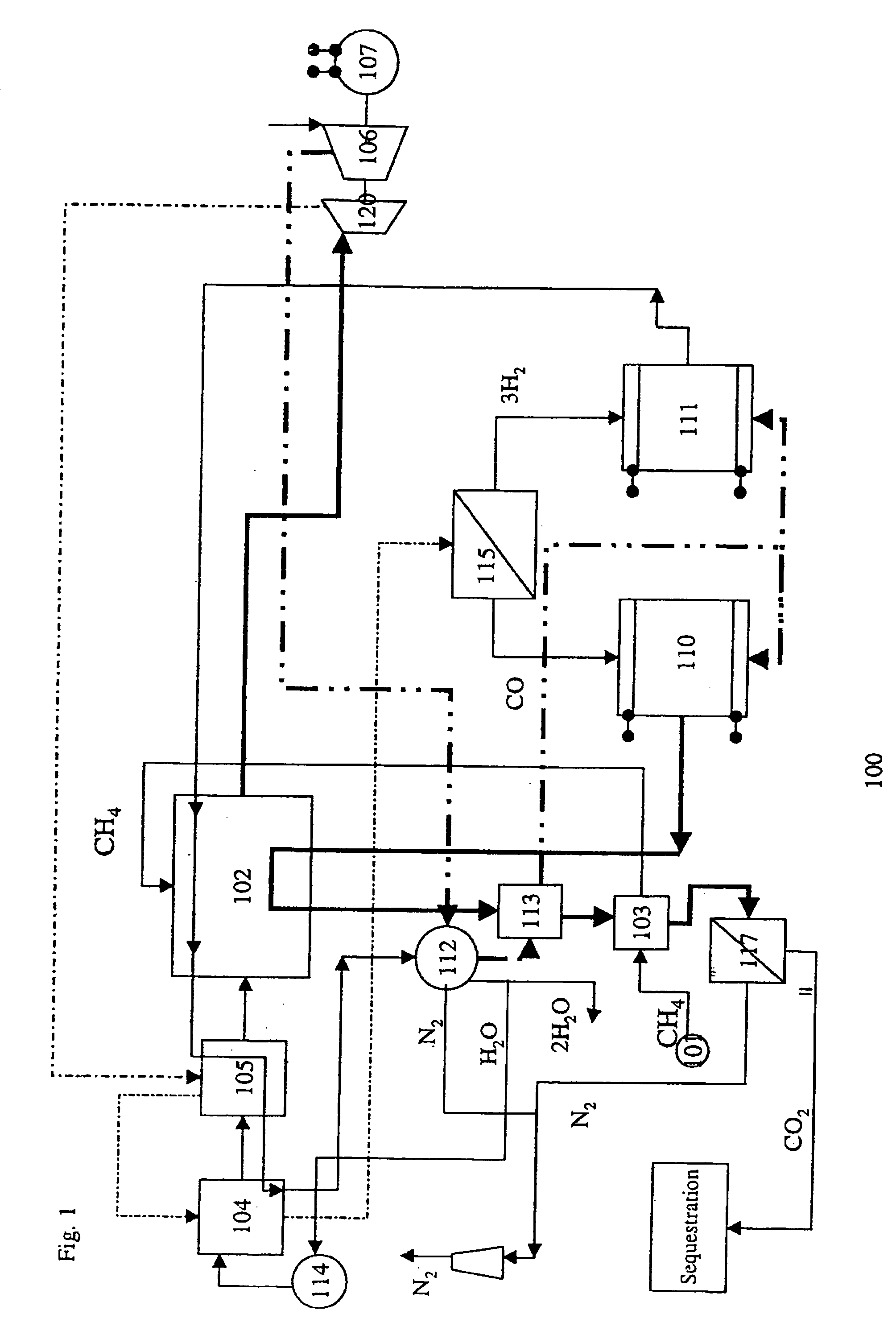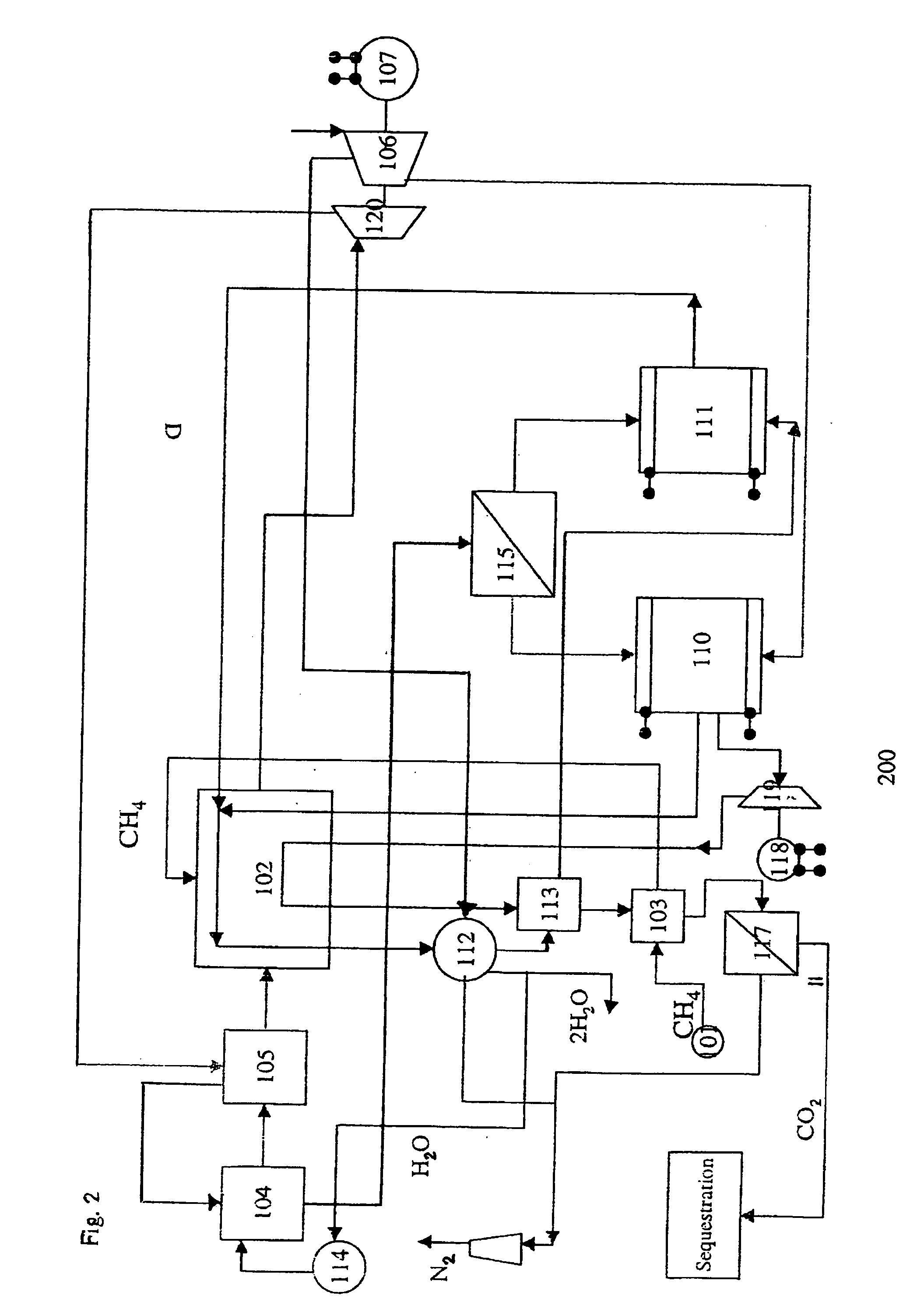Fossil fuel combined cycle power generation method
a combined cycle and fuel cell technology, applied in electrochemical generators, machines/engines, mechanical equipment, etc., can solve the problems of limited practical high and low temperature, inefficient use, and maximum thermodynamic efficiency, and achieve the effect of adding energy in the system
- Summary
- Abstract
- Description
- Claims
- Application Information
AI Technical Summary
Benefits of technology
Problems solved by technology
Method used
Image
Examples
Embodiment Construction
[0028] An apparatus and method for producing a high efficiency electrical power output combines fuel cells and gas turbines. The invention can increase the utilization efficiency of fuels, such as natural gas, in the process of fuel energy conversion to electricity by approximately 20 to 30% compared with existing power systems to approximately 80 to 85%. In addition, the invention produces substantially fewer environmentally harmful emissions compared to other power systems, generating up to approximately three times less harmful emissions compared to existing power systems. Another advantage of the invention is the production of significant quantities of drinking water.
[0029] The apparatus and diagram showing the basic configuration of an embodiment of the invention is shown in FIG. 1. Although specific chemicals, operating conditions and system interconnections are shown therein, the invention is in no way limited to the specific chemicals, operating conditions and system interc...
PUM
| Property | Measurement | Unit |
|---|---|---|
| pressure | aaaaa | aaaaa |
| pressure | aaaaa | aaaaa |
| pressure drop | aaaaa | aaaaa |
Abstract
Description
Claims
Application Information
 Login to View More
Login to View More - R&D Engineer
- R&D Manager
- IP Professional
- Industry Leading Data Capabilities
- Powerful AI technology
- Patent DNA Extraction
Browse by: Latest US Patents, China's latest patents, Technical Efficacy Thesaurus, Application Domain, Technology Topic, Popular Technical Reports.
© 2024 PatSnap. All rights reserved.Legal|Privacy policy|Modern Slavery Act Transparency Statement|Sitemap|About US| Contact US: help@patsnap.com










